What are the best cages for guinea pigs to live in?

Choosing the best guinea pig cage for your beloved pet is so important as it will be the habitat where your guinea pig will spend a good part of its life. Therefore, it is essential that it meets certain requirements and is equipped with the right accessories and supplies to make it a comfortable and an inviting environment.
In this article, we will evaluate ‘What are the best cages for guinea pigs to live in?’; Various guinea pig housing to assist your decision that is ideal for you, your environment and your little piggy.
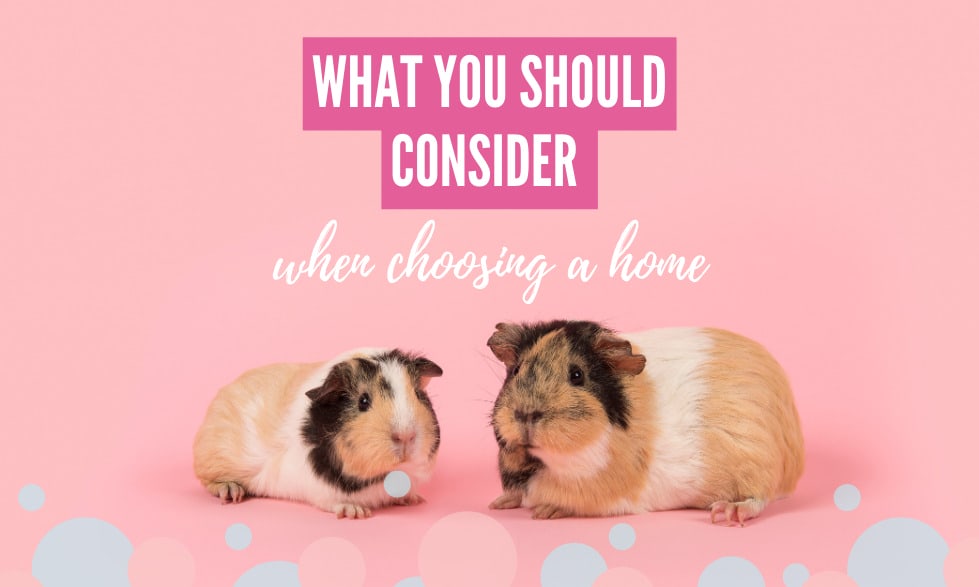
What you should consider when choosing a home for your Guinea Pig
The materials
You will find different types of materials guinea pig cages are made of, such as wood, plastic or metal. However, it is important that you check the type of wood, plastics or other materials used are safe for your guinea pigs.
The cage walls
When it comes to the material used for the walls, it’s important that the space between the bars, grid or wire must be small enough so that your guinea pig cannot escape or get stuck.
Terrariums or aquariums may not have this issue, but ventilation is very important to consider when choosing the right enclosure. Which terrariums or aquariums have extremely poor ventilation and DO NOT create an environment for your little guinea pig to flourish.
The cage floor
As guinea pigs have little paws, therefore flooring should be a flat and solid surface. Wire or grid flooring does not provide a stable surface and can be harmful and uncomfortable for them.
The size: How big should a guinea pig cage be?
Guinea pigs are one of the larger rodents and require space to roam. The minimum recommended size for a guinea pig cage is 65 cm long, 40 cm wide and 35 cm high, although the bigger the better, a suitable size would be 2 square metres.
The size will also depend on the number of guinea pigs sharing an enclosure/cage. Variables include: if they are adults and or males.
Male Guinea Pigs require additional space, as a smaller sized cage can generate territorial behaviours. It is advisable for males to be housed in cages of 140cm long by 70 cm wide.
If you have more than one guinea pig in the enclosure/cage, each one will need its own space, including enough water, feeder, and bedding.
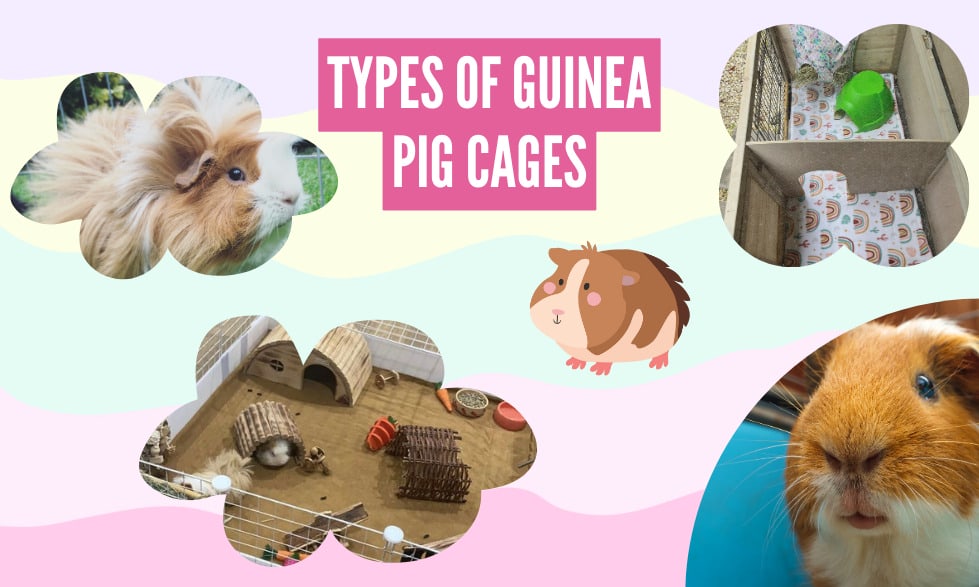
Types of guinea pig cages
When it comes to providing a home for your guinea pig, there are several types of cages you can choose from. It is important to assess your guinea pig’s needs before choosing a suitable cage for them. It needs to be spacious enough for them to move around, easy to clean and provide a safe environment.
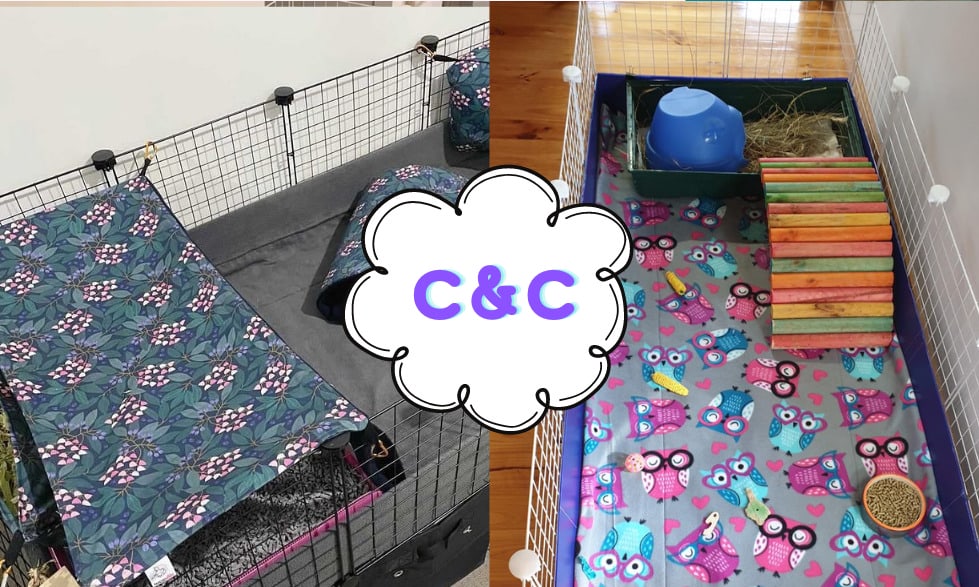
The C&C cage
These are one of the preferred cages by guinea pig experts, this is due to the versatility, quality, flexibility of design and reasonable price.
The C&C cages are formed by the union of panels/grids. The panels are 35.5cm x 35.5cm square and are easy to assemble with the connectors.
C&C cages allow your guinea pig to move freely and safely, which can be coupled according to the space of your home and your preferences or design. As you have the versatility to create levels for entertainment, sleeping, litter trays, etc.
They can be easily modified the way you want without having to buy sizes or measurements already fixed by the manufacturer, and are easily expandable thanks to their modular design.
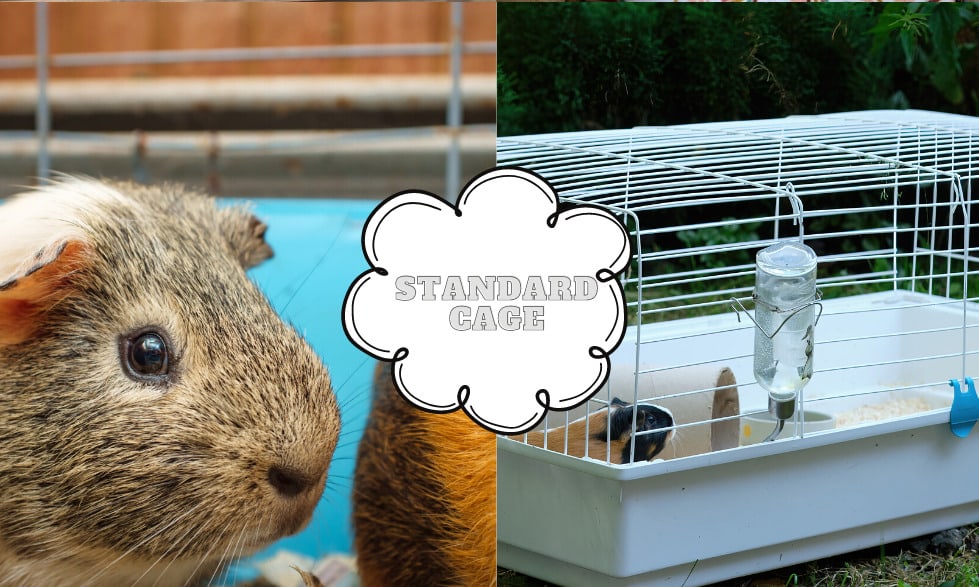
Standard Wire & Plastic Cages
These cages are often found at most pet stores and are often the popular go to option. They typically feature a wire top and a plastic bottom, and are a popular option for housing guinea pigs. While these cages have benefits, they also have drawbacks that pet owners should know.
One of the major benefits of wire top and plastic bottom guinea pig cages is that they are relatively affordable. They are also lightweight and easy to move around, which makes them convenient for pet owners who may need to change the location of the cage or clean it. These cages also typically come with a removable plastic bottom that can be easily cleaned, which helps to keep the cage hygienic for the guinea pig.
However, one of the major drawback is that they do not provide enough space for a guinea pig to move and explore, which can lead to a lack of exercise and boredom. Guinea pigs are active and need a cage that is large enough to accommodate their natural behaviour.
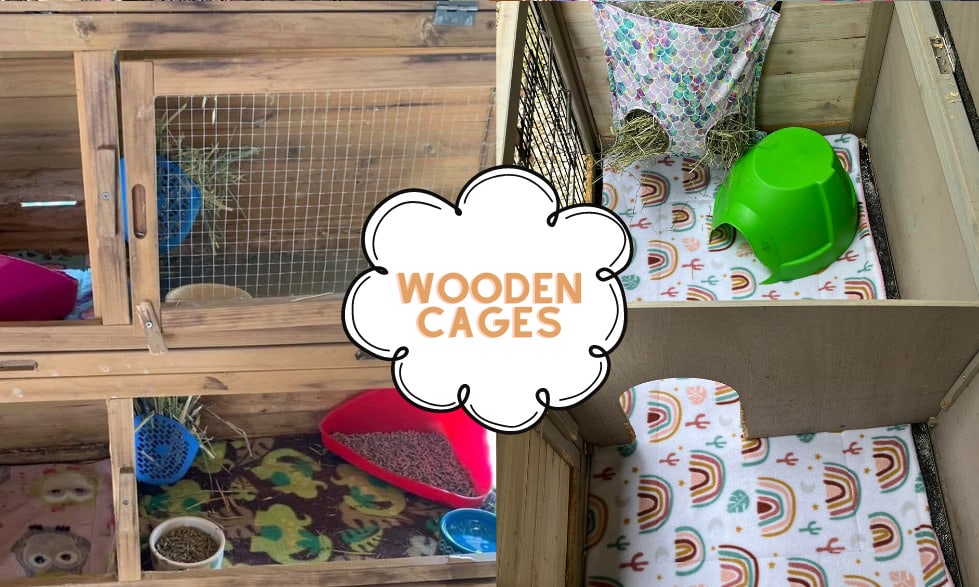
Wooden Cages
They are excellent for both indoors and outdoors, ideal for keeping your guinea pigs in the garden, patio, or terrace as they are spacious and non-toxic.
Most choose a wooden cage due to aesthetic look, it’s quality materials with fir wood and a metal grid.
However, the disadvantage of this material is that it’s a fixed design with zero flexibility and, as a living material, the wood absorbs biological material, liquids and retains odours. This can result in additional mold and bacterial growth.
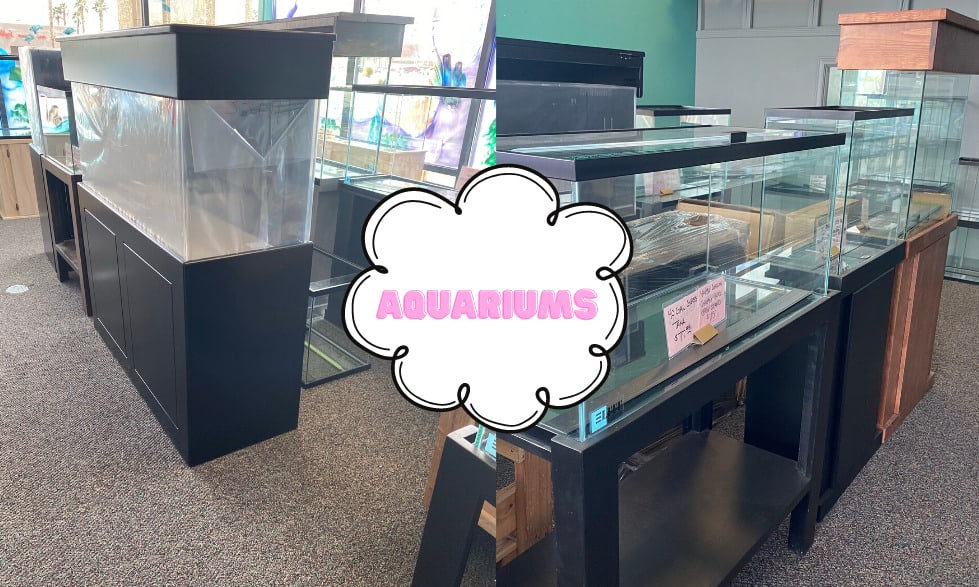
Aquariums / Terrarium
Glass or Plexiglas cages are very eye-catching but come with a risk to your beloved pet. These types of cages have poor ventilation and don’t provide sufficient or expandable space for your guinea pigs.
Warning around Aquariums and/ or Terrariums usage as a cage; if the temperature rises, the aquarium/terrarium will become an oven for your guinea pig and pose a serious health risk (dehydration/ heat-related illnesses), as they are very sensitive to temperature variations.
These are not recommended!

The Guinea Pig Playpen
Guinea pigs are active and enjoy exercise to stay healthy and strong. A fenced, penned area outside allows your furry friends to enjoy a different, enriching environment out of their cages.
Playpens are very popular and one of the bestsellers in the market because they provide freedom to the guinea pigs in a safe way and without having to watch them constantly, it is ideal for backyards and gardens.
They are cages formed by galvanised iron panels with a door, which includes spikes/pegs to keep it fixed to the ground and some come with a net at the top that functions as a roof to protect them from the sun and some predators. However, we do not recommend these enclosures when outside as a guinea pig’s permanent residency, and strongly recommend supervising your piggies when using them outside. As they do not provide the protection required when unsupervised or as an overnight option.
They are spacious, and often come in many different heights, they consist of many panels which are easily linked together allowing you to expand it in case you decide to integrate more guinea pigs into the family, plus it is fully foldable.
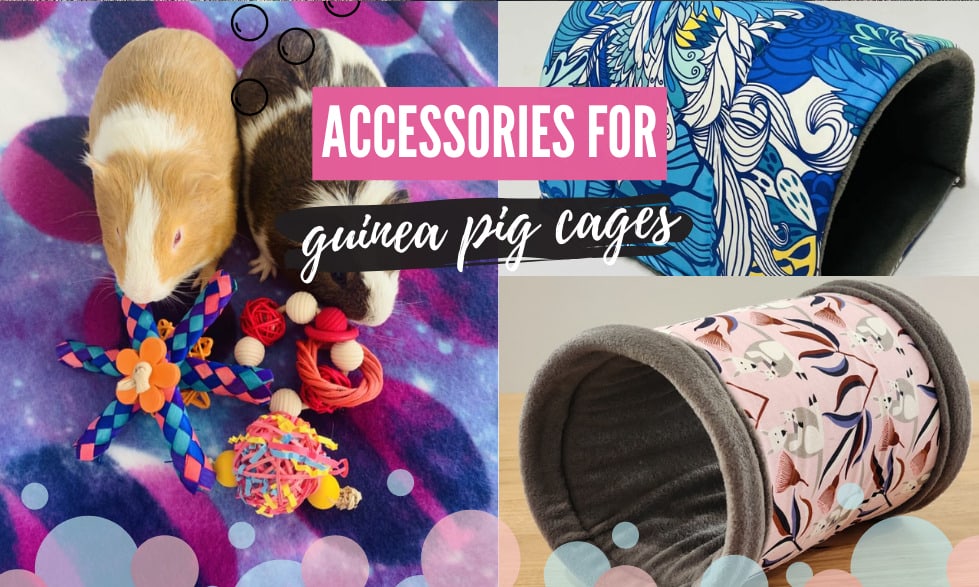
Accessories for guinea pig cages
Once you have chosen the ideal cage for your environment and guinea pig, you will need these basic accessories:
- A place for your guinea pigs to hide and seek a safe place as a shelter. Such as a guinea pig hut, a tunnel, hammock or other hide.
- A type of bedding to line the cage. We highly recommend an absorbent fleece cage liners because of their reusability and odour reducing properties. However, other options include hay, sawdust or wood shavings (which we strongly don’t recommend – read here), paper, cardboard and bath mats. You can read about more options here.
- Feeders and drinkers (these are sometimes included with the cage, these should be checked and cleaned regularly to maintain your piggies health).
- Entertainment options such as toys, tunnels, chew toys, these will help protect your piggie from boredom and keep them active throughout the day.

Where to place the cage?
The location of your little furry friend’s cage is very important. Why? Your guinea pig likes to see you to feel safe and secure in their environment. Avoid placing the cage in a very noisy and busy part of the house. It’s not advised to place your guinea pig’s cage near a window, radiators, or the coldest or most humid areas of the house.
We hope that with this information, you will find the best guinea pig cage that will suit your home environment and their needs.
Here at Teacup Nethies, you will find all the items you need to help create a warm, comfortable, secure environment for your special furry friend such as liners, toys, bedding, treats, and more.
